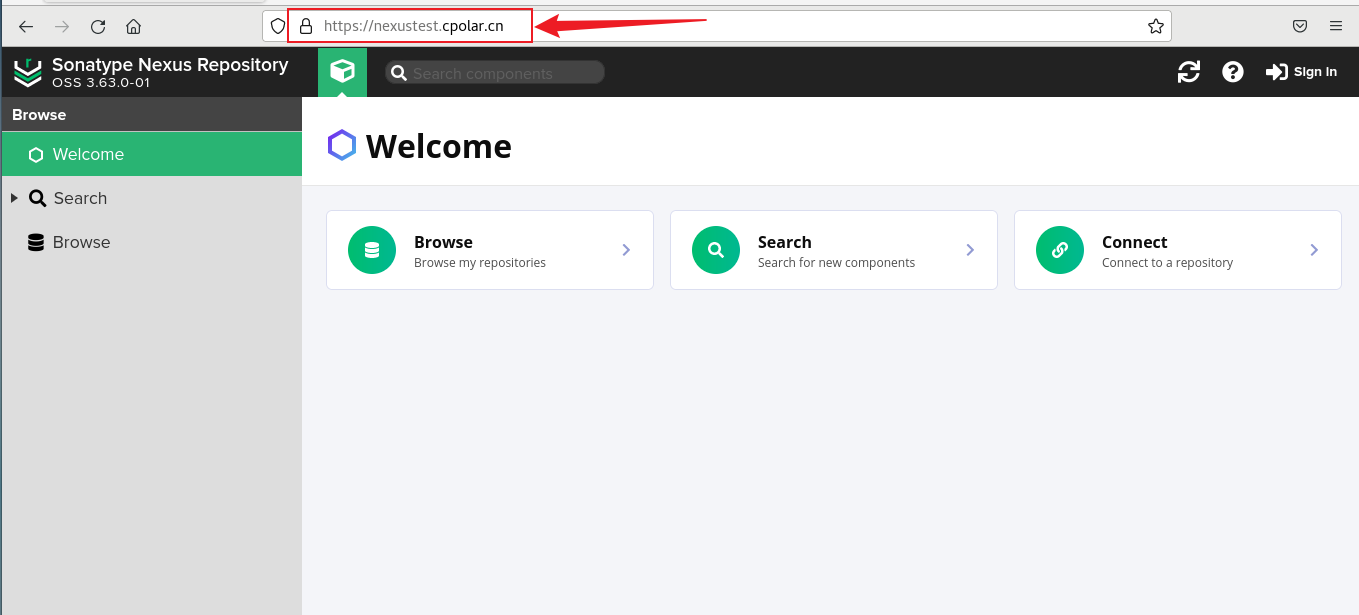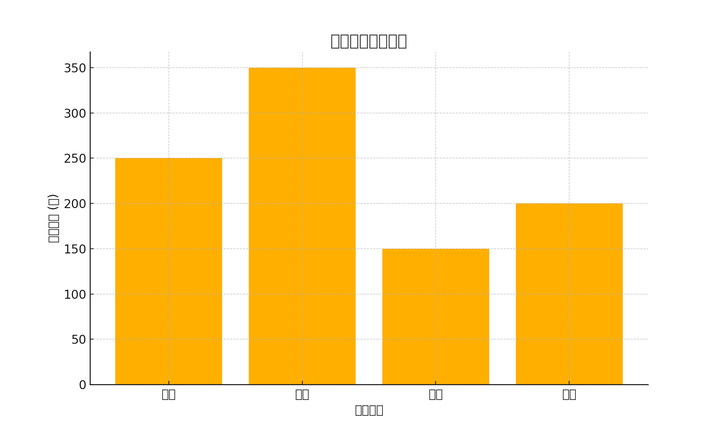1. 引言
Groovy 是一门基于 Java 虚拟机(JVM)的动态语言,而 GroovyShell 是 Groovy 提供的一个灵活强大的脚本执行工具。通过 GroovyShell,开发者可以在运行时动态执行 Groovy 脚本,它的灵活性非常适合那些需要动态编译与执行脚本的应用场景。然而,动态执行脚本同时也带来了一些潜在的安全风险,尤其在开发电商交易系统等敏感业务场景时,防止脚本注入与权限滥用尤为重要。
2. GroovyShell 基础介绍
GroovyShell 是 Groovy 核心 API 的一部分,用来在运行时执行动态 Groovy 脚本。与 Java 的静态编译不同,GroovyShell 可以在应用运行时执行传入的字符串形式的代码,非常适合动态配置或运行时脚本计算的场景。
2.1 GroovyShell 主要类
- GroovyShell:核心执行类,接受字符串形式的脚本并执行。
- Binding:用于将变量传递到 Groovy 脚本中,使其可以在脚本内访问 Java 对象。
- Script:表示一段 Groovy 脚本,允许在多次执行中复用脚本内容。
2.2 GroovyShell 的基本用法
使用 GroovyShell 可以非常简单地执行一段 Groovy 脚本。以下是一个基础的示例,演示如何通过 GroovyShell 动态执行一段计算逻辑。
import groovy.lang.GroovyShell;
public class GroovyShellExample {
public static void main(String[] args) {
GroovyShell shell = new GroovyShell();
Object result = shell.evaluate("3 + 5");
System.out.println("Result: " + result); // 输出:Result: 8
}
}
在该示例中,GroovyShell.evaluate() 方法接受一段 Groovy 脚本作为字符串并执行,返回脚本执行的结果。
3. 电商交易系统中的 GroovyShell 示例
在电商交易系统中,可能会需要动态配置一些业务逻辑,例如根据订单金额、用户类型、折扣策略等计算总价。通过 GroovyShell,开发者可以灵活地将这些业务规则编写成脚本,然后在运行时加载和执行。
3.1 正常场景示范:动态计算订单总价
假设我们需要通过 GroovyShell 动态执行一段业务逻辑来计算订单的总价,这段脚本根据订单金额和用户类型应用不同的折扣。
import groovy.lang.Binding;
import groovy.lang.GroovyShell;
public class OrderPricingService {
public static void main(String[] args) {
// 准备脚本的上下文
Binding binding = new Binding();
binding.setVariable("orderAmount", 1000);
binding.setVariable("userType", "VIP");
// 动态执行的 Groovy 脚本
String script = "if (userType == 'VIP') { return orderAmount * 0.8 } else { return orderAmount }";
GroovyShell shell = new GroovyShell(binding);
Object result = shell.evaluate(script);
System.out.println("Final price: " + result); // 输出:Final price: 800.0
}
}
在这个示例中,orderAmount 和 userType 是通过 Binding 传递给 Groovy 脚本的变量,脚本根据用户类型判断是否给予折扣。如果用户是 VIP,将给予 20% 的折扣。
3.2 恶意攻击示范:未处理的输入导致脚本注入攻击
如果在电商交易系统中,脚本是由外部用户输入提供的,那么这可能会导致严重的安全漏洞。假设开发者没有对传入的脚本进行任何校验,恶意用户可能会注入危险代码,进而影响系统安全。
import groovy.lang.Binding;
import groovy.lang.GroovyShell;
public class UnsafeGroovyShellExample {
public static void main(String[] args) {
// 恶意用户提供的输入脚本
String maliciousScript = "orderAmount * 0.8; Runtime.getRuntime().exec('rm -rf /');";
Binding binding = new Binding();
binding.setVariable("orderAmount", 1000);
GroovyShell shell = new GroovyShell(binding);
shell.evaluate(maliciousScript); // 执行恶意脚本
}
}
此示例展示了一个脚本注入攻击的场景。用户传入的脚本不仅包含了计算逻辑,还包含了恶意代码——删除系统中的所有文件。如果没有对用户输入的脚本进行校验,攻击者可以轻易地利用 GroovyShell 执行恶意操作。
4. 常见安全问题与解决方案
4.1 脚本注入攻击解决方案的细化与代码示范
脚本注入攻击是动态脚本执行中最常见且危险的安全问题,尤其是在使用 GroovyShell 这样的工具时,如果没有足够的安全措施,用户可以通过注入恶意代码执行系统命令、窃取数据、破坏文件等。为了防止脚本注入攻击,我们需要采取多层次的防护措施。
解决方案一:限制可访问的类和方法
GroovyShell 的灵活性允许它执行很多不同的类和方法,但在开放的环境中,这种灵活性可能会带来安全隐患。我们可以通过自定义 CompilerConfiguration,限制脚本只能使用指定的类和方法,禁止访问危险的 API,例如 Runtime.getRuntime().exec() 这样的系统命令执行方式。
代码示例:通过 SecureGroovyShell 限制脚本可用的类和方法
import groovy.lang.Binding;
import groovy.lang.GroovyShell;
import org.codehaus.groovy.control.CompilerConfiguration;
import org.codehaus.groovy.control.customizers.ImportCustomizer;
public class SecureGroovyShellExample {
public static void main(String[] args) {
// 1. 创建自定义的 CompilerConfiguration,限制可访问的类和方法
CompilerConfiguration config = new CompilerConfiguration();
// 2. 添加 ImportCustomizer,控制脚本中可以使用的包或类
ImportCustomizer importCustomizer = new ImportCustomizer();
importCustomizer.addStarImports("java.util"); // 只允许导入 java.util 包
config.addCompilationCustomizers(importCustomizer);
// 3. 禁止调用 Runtime、System 等危险的 API
config.setScriptBaseClass("SecureScript"); // 使用安全基类
// 4. 创建 GroovyShell 实例
Binding binding = new Binding();
binding.setVariable("orderAmount", 1000);
binding.setVariable("userType", "VIP");
GroovyShell shell = new GroovyShell(binding, config);
// 5. 安全的 Groovy 脚本
String script = "if (userType == 'VIP') { return orderAmount * 0.8 } else { return orderAmount }";
Object result = shell.evaluate(script);
System.out.println("Final price: " + result); // 输出:Final price: 800.0
}
}
// 定义安全的基类,限制脚本中对某些类的访问
public abstract class SecureScript extends groovy.lang.Script {
@Override
public Object run() {
throw new UnsupportedOperationException("Unsafe operations are not allowed!");
}
}
解释:
- ImportCustomizer:该工具用于限制脚本中的类或包导入。在上述示例中,我们只允许导入
java.util包,其他的 Java 系统类都无法使用,这就有效地避免了用户通过脚本调用Runtime或System进行恶意操作。 - CompilerConfiguration:通过配置
CompilerConfiguration,我们指定了脚本只能继承自SecureScript。在SecureScript中,覆盖了run()方法,禁止脚本执行不安全的操作。
解决方案二:使用脚本沙箱(Script Sandbox)
Groovy 社区提供了一个安全沙箱库,可以限制脚本的执行权限。通过这个沙箱,我们可以精细化控制脚本中允许使用的对象、方法和类。对于关键业务场景,建议使用 Groovy 的 groovy-sandbox 库来严格控制脚本的执行权限。
代码示例:使用 Groovy Sandbox 来限制脚本权限
import groovy.lang.Binding;
import groovy.lang.GroovyShell;
import org.kohsuke.groovy.sandbox.GroovyInterceptor;
import org.kohsuke.groovy.sandbox.SandboxedGroovyShell;
import org.kohsuke.groovy.sandbox.SandboxTransformer;
public class GroovySandboxExample {
public static void main(String[] args) {
// 1. 创建沙箱转换器
SandboxTransformer sandboxTransformer = new SandboxTransformer();
// 2. 创建 Sandboxed GroovyShell
GroovyShell shell = new SandboxedGroovyShell(new Binding());
shell.getClassLoader().addCompilationCustomizers(sandboxTransformer);
// 3. 添加自定义的 GroovyInterceptor,限制脚本中的 API 调用
GroovyInterceptor.register(new SafeInterceptor());
// 4. 执行脚本
String script = "Runtime.getRuntime().exec('rm -rf /');";
try {
Object result = shell.evaluate(script); // 这段代码会被拦截
System.out.println(result);
} catch (Exception e) {
System.out.println("Script execution blocked: " + e.getMessage());
}
}
}
// 自定义拦截器,限制对危险类和方法的访问
class SafeInterceptor extends GroovyInterceptor {
@Override
public Object onMethodCall(GroovyInterceptor.Invoker invoker, Object receiver, String method, Object[] args) throws Throwable {
// 拦截对 Runtime.getRuntime().exec 的调用
if (receiver instanceof Runtime && "exec".equals(method)) {
throw new SecurityException("Runtime.exec is not allowed!");
}
return super.onMethodCall(invoker, receiver, method, args);
}
}
解释:
- Groovy Sandbox:使用
groovy-sandbox库,通过沙箱模式拦截并控制脚本执行时的所有方法调用。在这个例子中,脚本试图调用Runtime.getRuntime().exec()会被拦截器阻止,从而防止恶意代码的执行。 - 自定义拦截器(GroovyInterceptor):我们可以定义自己的拦截器
SafeInterceptor,用于拦截脚本中的危险方法调用,如exec()。如果检测到不安全的操作,抛出SecurityException并阻止该操作。
解决方案三:静态代码审查
除了动态拦截之外,开发者还可以对用户提交的脚本进行静态分析,检测其中是否包含可疑或危险的代码。Groovy 提供了编译时的 AST 变换(Abstract Syntax Tree),可以通过它分析脚本中的结构和语义,找到潜在的安全问题。
import org.codehaus.groovy.ast.ClassNode;
import org.codehaus.groovy.ast.MethodNode;
import org.codehaus.groovy.control.CompilationUnit;
import org.codehaus.groovy.control.CompilerConfiguration;
public class StaticCodeAnalysis {
public static void main(String[] args) {
CompilerConfiguration config = new CompilerConfiguration();
CompilationUnit cu = new CompilationUnit(config);
cu.addPhaseOperation(sourceUnit -> {
for (ClassNode classNode : sourceUnit.getAST().getClasses()) {
for (MethodNode methodNode : classNode.getMethods()) {
if (methodNode.getCode().getText().contains("Runtime.getRuntime().exec")) {
throw new SecurityException("Unsafe method found in script!");
}
}
}
}, CompilationUnit.SEMANTIC_ANALYSIS);
cu.addSource("example.groovy", "Runtime.getRuntime().exec('rm -rf /');");
try {
cu.compile();
} catch (Exception e) {
System.out.println("Script failed static analysis: " + e.getMessage());
}
}
}
解释:
- 静态分析:该示例展示了如何在脚本编译过程中对其进行静态分析。如果检测到脚本中包含不安全的调用,如
Runtime.getRuntime().exec(),则会抛出异常,阻止脚本执行。
4.2 资源滥用
在电商交易系统中,脚本可能会消耗大量资源,如 CPU、内存等,导致系统性能下降。
解决方案
- 限制脚本执行时间:可以使用
ExecutorService来限制脚本的执行时间,避免脚本长时间占用资源。 - 资源隔离:通过容器化或虚拟化技术,隔离脚本执行环境,避免脚本占用系统的全部资源。
代码示范
import groovy.lang.Binding;
import groovy.lang.GroovyShell;
import org.codehaus.groovy.control.CompilerConfiguration;
public class SecureGroovyShellExample {
public static void main(String[] args) {
// 限制脚本执行的配置
CompilerConfiguration config = new CompilerConfiguration();
config.setScriptBaseClass("SecureScript"); // 设置安全基类
// 设置 Binding, 将安全相关的上下文变量传入脚本
Binding binding = new Binding();
binding.setVariable("orderAmount", 1000);
binding.setVariable("userType", "VIP");
// 自定义 GroovyShell 配置
GroovyShell shell = new GroovyShell(binding, config);
String script = "if (userType == 'VIP') { return orderAmount * 0.8 } else { return orderAmount }";
Object result = shell.evaluate(script);
System.out.println("Final price: " + result); // 输出:Final price: 800.0
}
}
定义安全基类
为确保脚本执行过程中无法访问危险的系统资源,我们可以自定义一个安全基类 SecureScript,在此基类中禁用某些不安全的方法和操作。
import groovy.lang.Script;
public abstract class SecureScript extends Script {
@Override
public Object run() {
// 禁用 Runtime 调用
throw new UnsupportedOperationException("Unsafe operations are not allowed!");
}
}
通过继承 Script 并覆盖 run() 方法,我们有效防止了脚本中使用诸如 Runtime.getRuntime().exec() 等危险的系统调用。此外,可以进一步扩展 SecureScript 以禁用更多可能导致资源滥用或泄露的操作。
限制 GroovyShell 执行的类和方法
除了自定义安全基类,还可以进一步通过 CompilerConfiguration 配置 GroovyShell 的行为。以下是如何禁止某些类或方法的示例:
config.setScriptBaseClass("SecureScript");
config.addCompilationCustomizers(new ImportCustomizer().addStarImports("java.util").addStaticStars("Math"));
在这个配置中,我们只允许脚本使用 java.util 包和 Math 的静态方法,其它不必要的系统资源则无法访问。
执行超时限制
为了防止脚本长时间占用系统资源,我们可以使用 ExecutorService 来限制脚本的执行时间。
import java.util.concurrent.*;
public class TimeoutGroovyShellExample {
public static void main(String[] args) throws InterruptedException, ExecutionException, TimeoutException {
ExecutorService executor = Executors.newSingleThreadExecutor();
Future<Object> future = executor.submit(() -> {
GroovyShell shell = new GroovyShell();
return shell.evaluate("Thread.sleep(5000); return 'Completed';"); // 模拟耗时任务
});
try {
Object result = future.get(2, TimeUnit.SECONDS); // 设定超时时间为 2 秒
System.out.println("Result: " + result);
} catch (TimeoutException e) {
System.out.println("Script execution timed out.");
} finally {
executor.shutdown();
}
}
}
在此示例中,若脚本执行时间超过 2 秒,TimeoutException 会被抛出,并及时终止脚本执行,确保系统不会因脚本长时间运行而遭受影响。
6. 类图与时序图
6.1 GroovyShell 类图

该类图展示了 GroovyShell 与 Binding、Script 的关系,GroovyShell 通过 Binding 传递上下文变量,并最终执行 Script。
6.2 GroovyShell 脚本执行时序图

该时序图展示了用户通过 GroovyShell 传递脚本和上下文变量,GroovyShell 将这些变量通过 Binding 传递给脚本,最后由 SecureScript 进行安全执行并返回结果的过程。
7. 总结
GroovyShell 是一款非常强大的工具,能够为 Java 应用带来极大的灵活性,特别是在电商交易系统等需要动态业务逻辑的场景下,GroovyShell 可以帮助开发者快速实现需求。然而,动态执行脚本也存在一定的安全风险,如脚本注入、资源滥用等。
在实际开发中,务必要为动态执行脚本的功能增加足够的安全保护措施,避免潜在的攻击或系统资源滥用问题。通过安全的 GroovyShell 实践,可以使系统更具灵活性,同时保证其健壮性和安全性。















![[网络编程]TCP和UDP的比较 及 通过java用UDP实现网络编程](https://i-blog.csdnimg.cn/direct/0d56d10c40734c0fbe1a7b4a340065f0.png)



